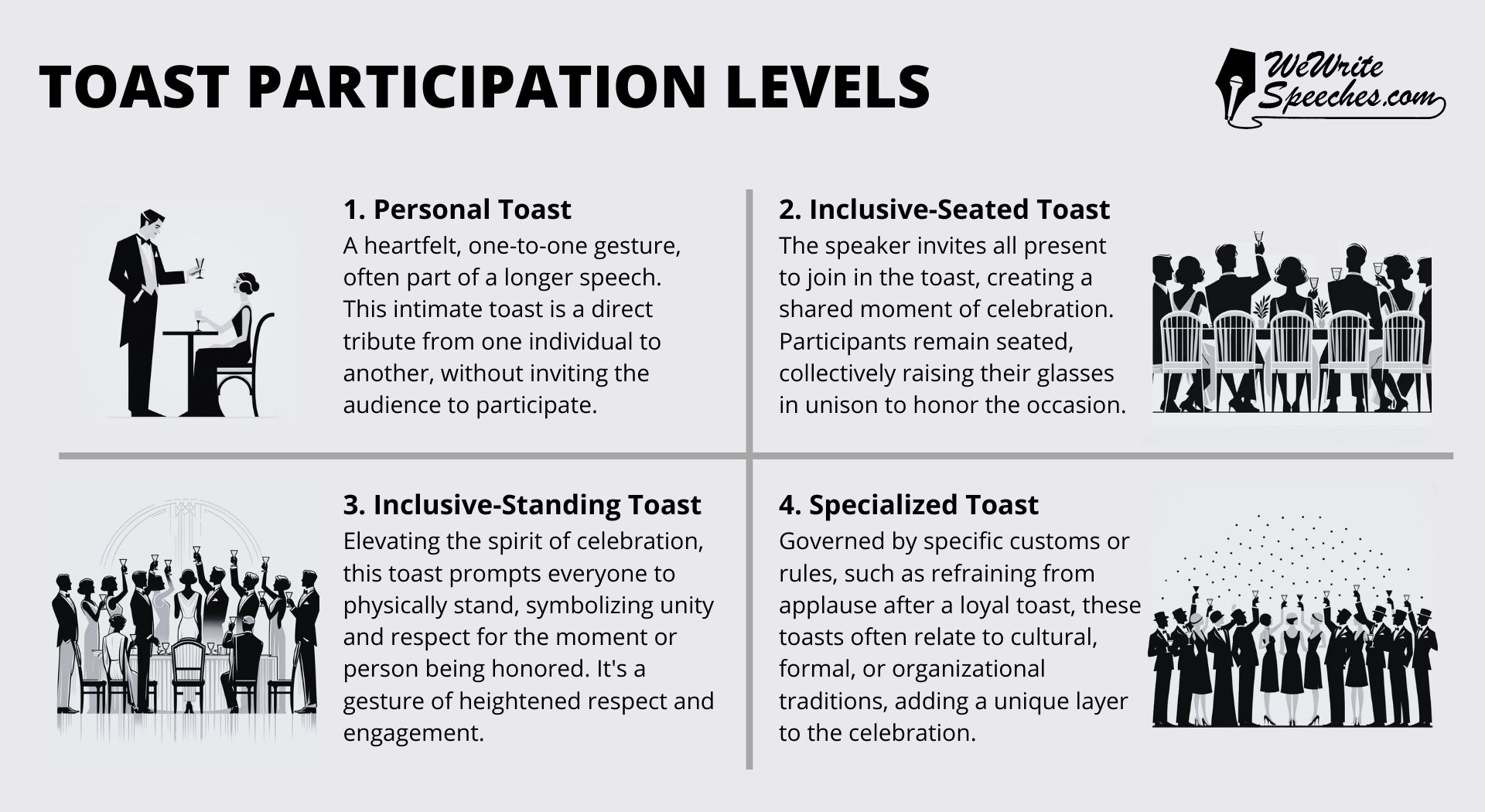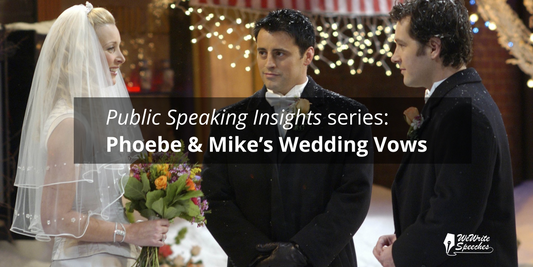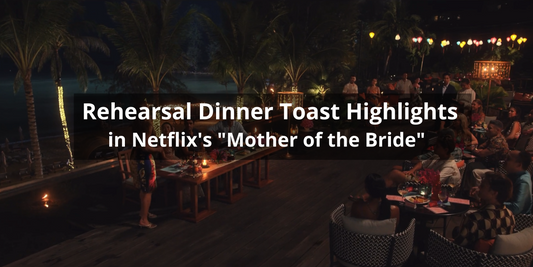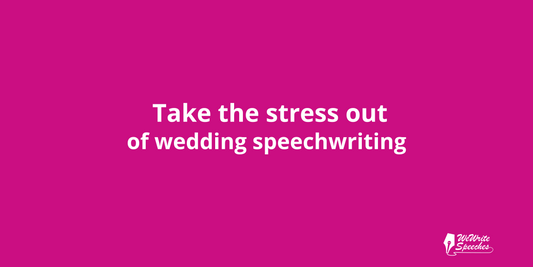Few gestures hold as much significance when celebrating special occasions as delivering a heartfelt toast. Whether it's a wedding, anniversary, or milestone birthday, a well-delivered toast can uplift spirits and create lasting memories. See our article on different options for placing toasts within a speech here.
But did you know you don’t have to ask everyone to stand for the toast or to join in at all? When you offer the toast, you can help the audience understand how they must participate. Here are three levels you could use, plus a fourth category for all the other particular ways people might interact with a toast.

1. Personal Toast
A personal toast is akin to whispering sweet sentiments directly into someone's ear. It's an intimate gesture, often woven into a longer speech, where one individual pays tribute to another in a heartfelt manner. Unlike other toasts, this one-on-one exchange doesn't invite the audience to participate; instead, it serves as a private moment shared between the speaker and the honoree.
When to Use: Reserve the personal toast for those intimate moments when you want to convey your deepest sentiments directly to the honoree. Whether it's a heartfelt expression of love between newlyweds at their wedding or a touching tribute to a close friend at a milestone birthday, the personal toast creates a special connection between the speaker and the individual being honored.
2. Inclusive-Seated Toast
In contrast to the intimacy of a personal toast, an inclusive-seated toast invites all present to partake in the celebration. The speaker encourages participants to raise their glasses in unison as they remain comfortably seated. This collective gesture fosters a sense of camaraderie and unity, allowing guests to come together in honor of the occasion.
When to Use: Opt for the inclusive-seated toast when you want to involve all guests in the celebration without disrupting the flow of the event. Perfect for large gatherings or formal dinners, this method allows everyone to participate while comfortably seated. Whether toasting to a successful business venture or commemorating a special anniversary, the inclusive-seated toast fosters a sense of unity and camaraderie among all present.
3. Inclusive-Standing Toast
For moments that call for heightened reverence and respect, an inclusive-standing toast takes center stage. As the speaker prompts everyone to rise to their feet, the act of standing symbolizes unity and respect for the individual or moment being honored. With glasses raised high, guests join together in a physical display of solidarity, underscoring the occasion's significance.
When to Use: Choose the inclusive-standing toast for moments that demand heightened reverence and respect. Whether honoring a distinguished guest at a gala event or paying tribute to a fallen comrade at a memorial service, this method elevates the spirit of the occasion by prompting everyone to rise to their feet. With glasses raised high, guests join together in a physical display of solidarity, underscoring the moment's significance and honoring the individual being celebrated.
4. Specialized Toasts
Not every toast fits into one of those three categories outlined above, so we have set out another category to catch all the exceptional cases. Every culture, organization, and social gathering has its own customs and traditions; toasting is no exception. From formal dinners to cultural ceremonies, these toasts adhere to specific rules and customs that give the celebration special significance. Here is just a sample:
- There is a well-developed etiquette around the five toasts that are usually offered at Livery company functions in the United Kingdom (Livery companies are a type of guild or professional association that originated in medieval times in London). The expected behavior of those present depends on the particular livery company, the particular toast being given, and whether or not there is music. One such scenario is where the “Master” stands up to offer the Loyal Toast and says “The King” after which everyone stands up, stands to attention, the music starts playing, everyone sings the first verse of the national anthem, and only then will they touch their glasses and drink to the toast.
- In Japan, there is a formal protocol for offering a toast. First, the host pours a glass for the guest, who then holds the glass in a specific way. The host then pours their own glass and lowers it below the guest’s glass as a sign of respect. The guest responds by lowering their glass, after which they both clink glasses, say “kan pai” (which means “dry glass”), and drink.
- In Australia, it’s not unknown for a person to say “Cheers, big ears!” while offering a toast, followed by the response, “Same goes, big nose!”
Whether refraining from applause after a loyal toast or adhering to cultural protocols, a specialized toast serves as a nod to tradition and enriches the experience for all involved.
Closing thoughts
In conclusion, the art of delivering a toast lies in the words spoken and the method chosen to match the moment. Whether sharing a private moment between two individuals or uniting a room full of guests in a collective celebration, each method offers its special way to elevate your toast and create memories that will last a lifetime. Except in cases where the toasting etiquette is very well codified and well known to all present (such as with the livery companies in London), you should let your audience know what is expected of them, especially if you want them to stand.
Cheers to making every moment memorable!




